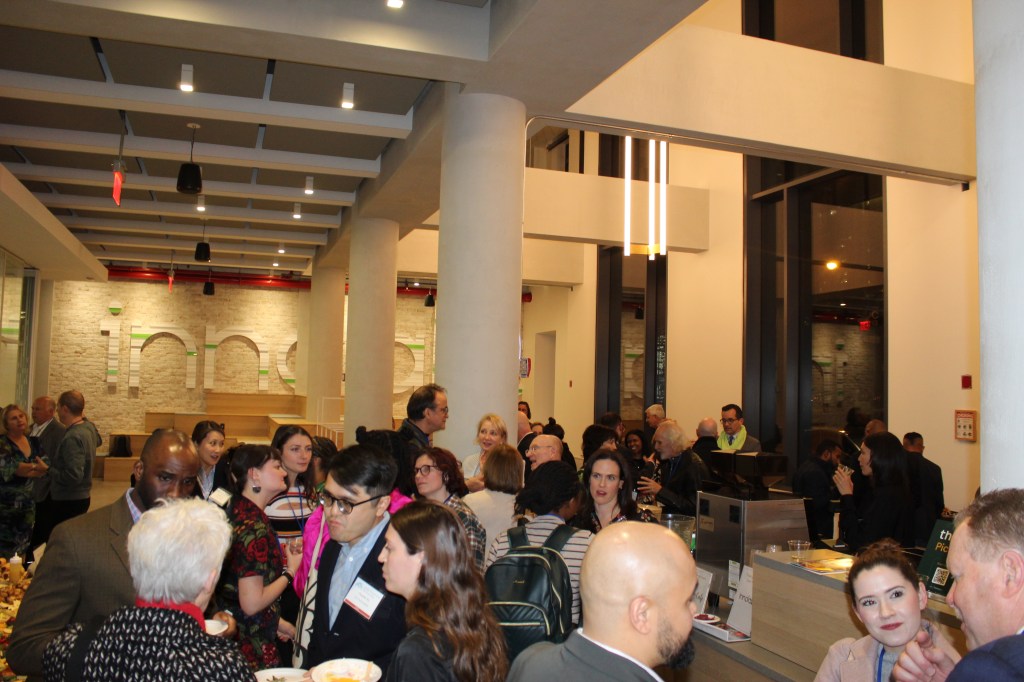The de Blasio administration is defending itself from an onslaught of criticism from homeless advocates, and now the City Council, that it is not doing enough to solve the chronic homeless crisis.
Several hundred protesters marched on Gracie Mansion on Oct. 24 demanding the Mayor dedicate 30,000 units of his affordable housing plan for homeless New Yorkers, including 24,000 units to be created through new construction, and on Wednesday City Councilman Rafael Salamanca introduced legislation that would require developers who receive city financial assistance for rental housing development projects to set aside no less than 15 percent of created or preserved dwelling units for homeless individuals and families.
“I strongly support increasing the number of units who receive city funds are required to set aside for the homeless,” Council Speaker Corey Johnson said after the bill was introduced. “Homelessness is one of the biggest issues we are grappling with as a city, and we need an all hands on deck approach towards solving it. This bill is just being introduced and will go through the legislative process, but its ultimate goal I strongly support.”
City Hall says it has created and preserved 109,000 affordable units since 2014, including 8,900 for the homeless while its programs have helped more than 100,000 New Yorkers exit shelter during the same time span.
“The mayor’s focused on getting the maximum number of families out of shelters and into homes. Building new apartments is part of that strategy, but it’s a much more expensive and slower option than providing things like rental assistance,” de Blasio Spokeswoman Jaclyn Rothenberg said. “The Mayor’s housing plan must balance the need for quick solutions with long-term approaches that also help low- and middle-income New Yorkers afford their city. It’s a delicate equation we think we’re getting right.”
Officials from the city Department of Housing Preservation & Development believe the Salamanca bill is not necessary.
“We have set a standard by requiring a minimum 10 percent of apartment in virtually all affordable developments to be set aside for homeless New Yorkers. This allocation can be as high as as 60 percent in some developments,” HPD Spokesman Matthew Creegan said.”This bill would undermine the flexibility we need to adapt to the market and continue delivering housing for homeless New Yorkers as well as low-income New Yorkers and those on the brink of homelessness.”
Despite the administration’s efforts, the homeless population currently in shelter remains at a near-record 60,896 people in city homeless shelters, including 22,519 children. After the Salamanca legislation was introduced several dozen homeless advocates rallied on the steps of City Hall including Nathylin Flowers Adesegun, a resident of a Long Island City shelter for the past three years who generated headlines last month when she challenged Mayor Bill de Blasio on the issue as he worked out at his gym.
Adesegun, a community leader at VOCAL-NY, spoke of the incident after she joined hundreds that marched on Gracie Mansion last week.
“I confronted Mayor de Blasio at the Park Slope YMCA to demand housing for homeless New Yorkers. He dismissed me that day. His office didn’t give us an answer when we met with them, so today I marched to Gracie Mansion because we will not stop fighting until we have homes,” Adesegun said.
Several Queens elected officials spoke in support of the homeless advocates following the march on Gracie Mansion, including City Councilman Barry Grodenchik.
“While addressing homelessness has been at the forefront of our city’s agenda, affordable, permanent housing for homeless New Yorkers must continue to be a major component of the city’s plan,” Grodenchik said. “The current system too often seems like a band-aid on a critical wound, so I stand with the coalition to say that at this time of crisis, building significantly more housing for homeless families is absolutely critical.”
City Councilman Francisco Moya cited the children who are currently living in city shelters.
“One in 10 students last year were homeless. About one in three New Yorkers in city homeless shelters are children,” Moya said. “The most significant factor leading to homelessness in the city is a lack of affordable housing. As city officials, we all ought to address this housing emergency the urgency it demands.”
City Councilman Donovan Richards called the homeless and affordable housing crisis as the most important issues in the city.
“While I understand how difficult this challenge is, we must pull together to do the right thing for all New Yorkers struggling to find affordable permanent housing,” Richards said.
“It’s going to take an extreme effort to find a home for every homeless New Yorker, but with Public Advocate James, Comptroller Stringer, our Borough Presidents and the majority of the City Council aligned on this goal, we have the dedication and the will to get this done for people with the greatest need for housing,” he added. “We just need the Mayor to get on board and commit to 30,000 units dedicated to homeless New Yorkers.”




































